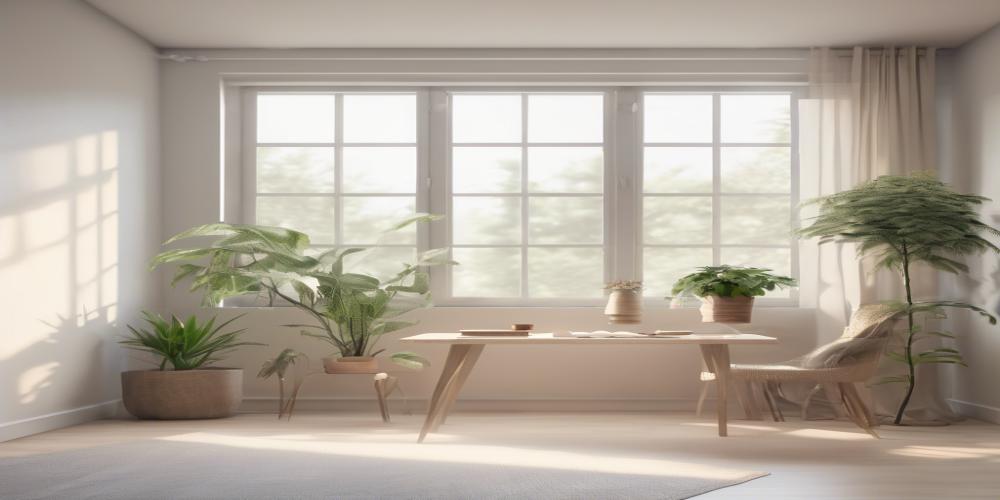Minimalism & Simple Living: A Pathway to a Fulfilling Life
Understanding Minimalism & Simple Living
In today's fast-paced world, the concepts of minimalism and simple living have garnered increasing attention. However, what do these terms actually mean, and why are so many people drawn to them?
What is Minimalism?
Minimalism is a lifestyle that advocates for living with less. This does not necessarily mean living in an empty space with only bare necessities. Rather, it means owning fewer items that you truly need and cherish. Minimalism encourages you to make a conscious decision about what you keep in your life, focusing on what adds value and eliminating what doesn't. Key principles of minimalism include:
- Intentionality: Being deliberate about what you own and bring into your life.
- Simplicity: Streamlining your possessions and focusing on what is truly necessary.
- Utility: Ensuring that what you own serves a purpose or brings joy.
What is Simple Living?
Simple living, also known as voluntary simplicity, is a lifestyle characterized by a slower, more mindful way of living. Those who adopt a simple life often prioritize quality over quantity in all aspects of their lives, from personal belongings to daily activities. Simple living aims to reduce stress and increase personal satisfaction by focusing on what truly matters such as relationships, health, and community. Key aspects of simple living include:
- Self-sufficiency: Growing your own food, making your own clothes, or reducing dependence on external sources for basic needs.
- Mindful Consumption: Making thoughtful purchasing decisions and avoiding unnecessary spending.
- Focus on Experience Over Materialism: Valuing experiences and relationships over material possessions.
The Intersection of Minimalism & Simple Living
While minimalism and simple living are distinct concepts, they often overlap and complement each other. Both lifestyles aim to reduce clutter—whether it’s physical clutter from excess possessions or mental clutter from too many distractions. By focusing on what truly matters, both minimalism and simple living advocate for a more fulfilling life.
Benefits of Embracing Minimalism & Simple Living
1. Reduced Stress: By reducing the number of possessions and commitments, you naturally decrease the amount of clutter and chaos in your life which reduces stress and anxiety.
2. Financial Freedom: By spending less on unnecessary items and focusing on what you need, you can save money and reduce financial stress. This often leads to a more secure financial situation where you can live within—or even below—your means.
3. Increased Focus on Relationships: When you spend less time dealing with clutter and more time on what matters, you free up time for meaningful interactions with family and friends.
4. Environmental Impact: Both minimalism and simple living often lead to a smaller environmental footprint due to less consumption and waste.
5. Personal Satisfaction: By focusing on what brings true joy and satisfaction rather than what society dictates should make you happy, you often find a deeper sense of fulfillment.
How to Start with Minimalism & Simple Living?
1. Declutter Your Space: Begin with one room or one category of items (e.g., clothes, books, kitchenware) and sort through what you need and what you don’t. Keep items that bring you joy or serve a specific purpose and donate or discard the rest.
2. Mindful Purchases: Before making a new purchase, ask yourself if you really need the item and if it adds value to your life. Avoid impulse buying and invest in high-quality items that will last longer.
3. Focus on Experiences: Instead of spending money on material possessions, invest in experiences such as travel, classes, or hobbies that enrich your life and create lasting memories.
4. Simplify Your Schedule: Review your commitments and eliminate activities that don't bring you joy or aren’t necessary. Make time for what truly matters such as relaxation and family time.
5. Digital Minimalism: Limit your screen time and declutter your digital spaces such as email inboxes and social media accounts. Unsubscribe from unnecessary notifications and focus on meaningful online interactions.
Minimalism and Simple Living in Daily Practice
One of the most well-known advocates of minimalism, Marie Kondo, emphasizes the “KonMari” method which encourages keeping only items that "spark joy." Another advocate, Joshua Fields Millburn and Ryan Nicodemus from "The Minimalists," suggest focusing on what adds value by asking the question, “Does this item add value to my life?”
Simple living may also involve adopting a “slow living” approach where you take time to enjoy and savor everyday experiences—whether that means cooking a meal from scratch, spending more time in nature, or simply enjoying a quiet moment without distractions.
Conclusion
Minimalism and simple living are both about making conscious choices that prioritize what truly enhances your life while eliminating what doesn't. By adopting these lifestyle principles, individuals often find a deeper sense of fulfillment, reduced stress, and a more meaningful connection to the world around them. Whether you’re just starting out or looking for ways to enhance your current minimalist or simple living practices, remember that the journey itself is just as rewarding as the destination.
So, why not start today? Dedicate some time to declutter a part of your home or reevaluate your daily routine—you may find that a simpler life is indeed a richer one.
Embracing minimalism and simple living might seem daunting at first, but the benefits are well worth the effort. Happy decluttering!
Final Thought
“The ability to simplify means to eliminate the unnecessary so that the necessary may speak.” – Hans Hofmann.
Let minimalism and simple living guide you toward a life where the necessary truly speaks.










